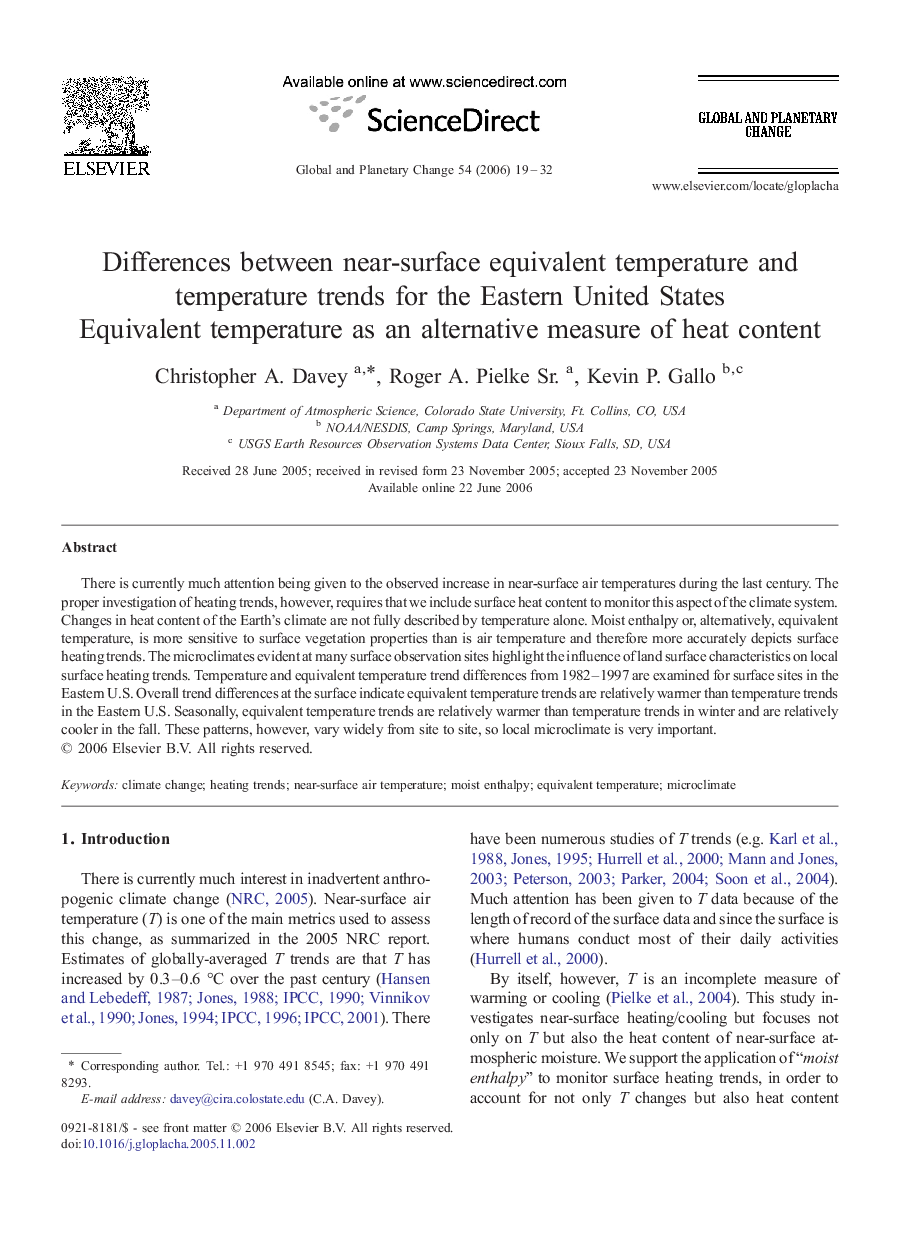| Article ID | Journal | Published Year | Pages | File Type |
|---|---|---|---|---|
| 4464468 | Global and Planetary Change | 2006 | 14 Pages |
There is currently much attention being given to the observed increase in near-surface air temperatures during the last century. The proper investigation of heating trends, however, requires that we include surface heat content to monitor this aspect of the climate system. Changes in heat content of the Earth's climate are not fully described by temperature alone. Moist enthalpy or, alternatively, equivalent temperature, is more sensitive to surface vegetation properties than is air temperature and therefore more accurately depicts surface heating trends. The microclimates evident at many surface observation sites highlight the influence of land surface characteristics on local surface heating trends. Temperature and equivalent temperature trend differences from 1982–1997 are examined for surface sites in the Eastern U.S. Overall trend differences at the surface indicate equivalent temperature trends are relatively warmer than temperature trends in the Eastern U.S. Seasonally, equivalent temperature trends are relatively warmer than temperature trends in winter and are relatively cooler in the fall. These patterns, however, vary widely from site to site, so local microclimate is very important.
